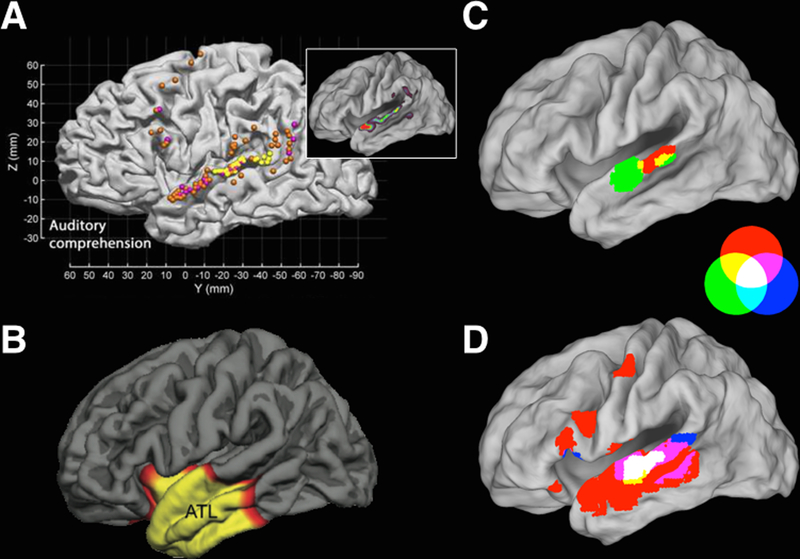Figure 1.
Semantic retrieval in auditory single-word comprehension is associated with the integrity of anterior STG function, as found in stimulation mapping (A, orange markers) and lesion-symptom mapping (B). Auditory word-form recognition is associated with mid-to-anterior STG, as found in stimulation mapping (A, yellow markers) and meta-analysis of functional imaging (C, D). The meta-analytic results depicted are RGB overlap maps for effects of repetition suppression for phonemes (C, red shading) and auditory words (C, green shading), as well as for tests of speech-related combination sensitivity (D, red shading), invariant representation (D, green shading) and areal specialization (D, blue shading). Notably, when a probability density function is estimated for the reported stimulation mapping foci (A), peak density is found along STG, excluding the most posterior aspect of STG, with the global peak in anterior STG (A, inset). Together, these results imply a processing hierarchy for phonemes, word-forms and semantic retrieval that extends along STG in an anterior-oriented gradient. Adapted from (DeWitt & Rauschecker, 2012; Mesulam et al., 2015; Roux et al., 2015).

